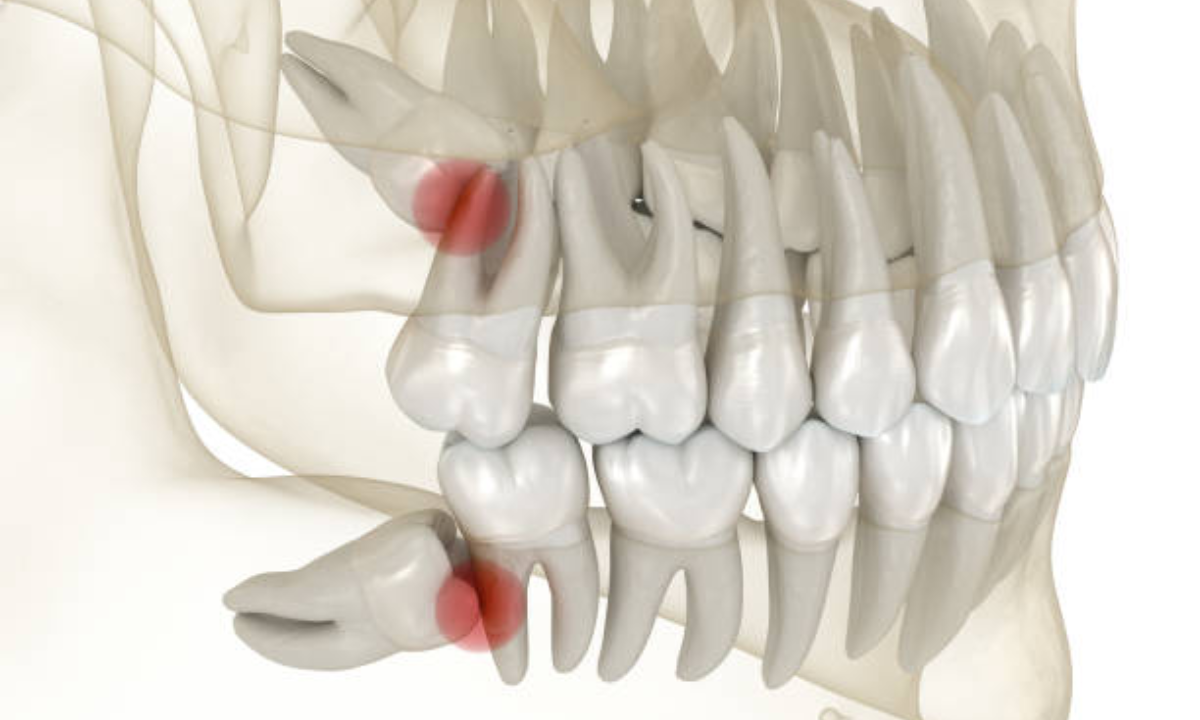Wisdom Tooth Extraction is probably the most common dental procedure performed, with most people experiencing this around their late teens or early twenties. Knowing what to expect during the process and after surgery can make a huge difference in experience. Whether you are planning a visit to a dental clinic or are consulting a trusted dentist, this guide will give you a clear idea of what to expect.
What Are Wisdom Teeth and Why Are They Removed?
Wisdom teeth are the last molars in a person’s mouth; they usually appear during late teens to early twenties. Some people never have issues with them, but many do due to:
Impact: The tooth did not erupt properly since there was not enough space.
Crowding: It causes the movement of other teeth around it.
Infection or Decay: The wisdom teeth are usually more difficult to clean, hence easily prone to cavities or gum disease.
The dentists advise removal to prevent further dental complications in such cases.
Pre-Wisdom Tooth Removal Preparation
1. Consultation and X-rays

Your dentist will perform a comprehensive examination, which often involves X-rays, to evaluate the position of your wisdom teeth. This process will indicate whether they are impacted or pose a threat to surrounding teeth.
2. Preoperative Discussion
Your dentist will discuss the procedure, options for anesthesia, and risks involved. Most patients decide between local anesthesia, sedation, or general anesthesia based on their comfort level and the complexity of the case.
3. Pre-Surgery Instructions
You may be advised to:
- Fast for a few hours before the procedure.
- Make arrangements to have someone with you at the clinic if you are to receive sedation or general anesthesia.
- Report any medications you are on, as some may need to be stopped.
Procedure for Wisdom Tooth Extraction
1. Administration of Anesthesia
The process starts with administering anesthesia. Local anesthesia will be enough for simple extraction, but for impacted teeth and nervous patients, sedation or general anesthesia is preferred.
2. Incision and Extraction
For Simple Extractions: The dentist loosens the tooth with special tools and then pulls it out with very little force.
For Surgical Extractions: The gum tissue is cut, and the tooth can be divided into fragments to make removal easier if the tooth is impacted.
3. Suturing the Area
The dentist sutures the area to aid in healing, especially for surgical extractions. The stitches usually dissolve within a few days.
4. Gauze Application
Gauze is applied over the extraction site to control bleeding and help form a blood clot.
Post-Procedure: Wisdom Teeth Removal Recovery
1. Immediate Aftercare
Rest for the first 24 hours. Avoid strenuous activities to minimize the risk of dislodging the blood clot.
Use an ice pack on the cheek to reduce swelling. Apply for 15 minutes on and off during the first day.
2. Pain Management
Your dentist will likely prescribe pain relievers and, in some cases, antibiotics to prevent infection. Over-the-counter options like ibuprofen can also help manage discomfort.
3. Dietary Restrictions
Stick to soft foods such as yogurt, soup, and mashed potatoes in the early healing stages. Avoid:
Hot drinks can melt the blood clot.
Solid hard or crunchy foods can irritate the extraction site.
Straws because sucking on a straw may cause an agonizing condition known as a dry socket.
4. Oral Hygiene Instructions
Do not brush the area of extraction for the first 24 hours.
After 24 hours, gently swish warm salt water around the area to keep it clean. Do not rinse hard.
5. Timeline to Expect for Recovery
Day 1-3: Swelling and mild soreness can be expected. You can take pain relief medication as indicated.
Day 3-5: Swelling starts to subside, and you can slowly start to introduce more solid foods into your diet.
Day 7: Stitches will dissolve or be removed during your follow-up visit.
Week 2: Patients should feel quite recovered and tenderness to the area might be mild.
Possible Complications and When to Seek a Whitefield Dentist
Most people have smooth tooth extractions, but possible complications exist. In case of one of these, reach your Whitefield dentist.
- Increased bleeding past 24 hours
- Serious pain that won’t subside with painkillers
- Appearance of signs of infection such as fever, redness, and foul odor around the gum.
- Dry socket, where the blood clot is lost too early.
These conditions can be treated immediately.
How to Select the Best Dental Clinic
The most important thing is to get a good dentist who will make the experience as smooth as possible. Here are some factors to consider while choosing a dental clinic in Whitefield:
- Expertise and Qualifications: Choose clinics with experienced oral surgeons or dental professionals.
- Patient Reviews: Check the online reviews to know the patient’s satisfaction level.
- Facilities: Modern equipment and hygiene standards ensure a safe and comfortable experience.
- Accessibility: Choose a clinic conveniently located for follow-up visits.
Conclusion
Removing the wisdom tooth is the simplest, most common dental treatment and surgery that aims to mitigate and prevent any complications of it. It can become simple, free of hassle, and problem-free if properly prepared by the patient and with adequate attention on aftercare by an able dentist in Whitefield. Consult a well-known Whitefield dental clinic for proper guidance.

